
Outgoing outsides
Churchyards are much more than just the green space around a church.
They are spaces for quiet, natural habitats and places to explore your history and heritage.
Until the 19th century churches and churchyards were the only places where people could be buried, and as such, are very important places for history and archaeology, revealing evidence of the past and of the lives of people who have lived and worked in the parish.
They also provide a sanctuary for a rich diversity of trees, plants, animals and insects and some are classed as sites of special scientific interest.
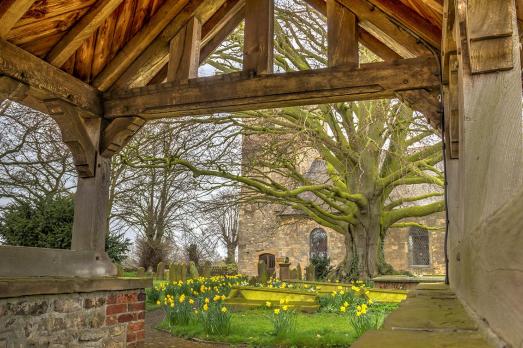
Lychgate
Lych is derived from the Old English 'lich', meaning corpse. They were meeting places and shelters for the party bringing a corpse for burial, and for the priest to receive the corpse.
Although some had been built earlier, the 1549 Prayer Book required the priest to meet the corpse at the churchyard entrance. This encouraged the provision of lychgates to shelter the corpse and the funeral party for that purpose.
Medieval lychgates were made of timber and most have long since disappeared. However, many new lychgates were erected in Victorian times, sometimes as memorials to prominent local people or as war memorials.
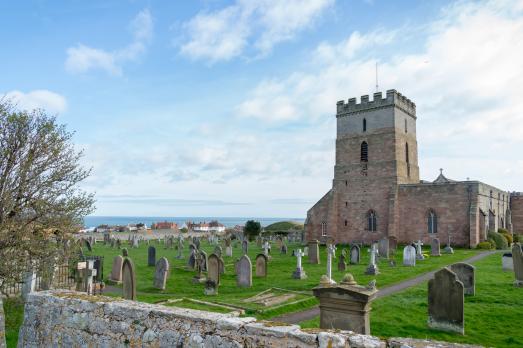
Churchyard
Graves in the churchyard should face east. Christians adopted the old Jewish custom of burying the dead with their feet towards the rising sun. It is also to face the Lord, who will approach from the east at the final Day of Judgement. Vicars are buried with feet facing the church. One reason for this is to symbolise that they are still attending their flock.
Traditionally, most burials took place on the south side of the church. The north side was sometimes used for the burial of suicides, criminals, and infants who had not been baptised.

Yew trees
Renowned for their longevity, yew trees are found in many church yards.
Because of their great age, yews were associated with pre Christian burial grounds. Recent research shows that Bronze Age round barrows were encircled with yews. In symbolic terms, yews do not only represent death, but also resurrection. Their evergreen foliage was highly valued, and used for religious and secular festivals.
Even today, yews are still being planted in church yards, and serve as a reminder of an earlier, pagan age.
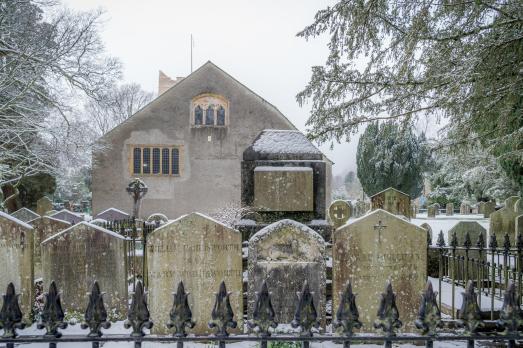
Burial
For much of history, the church or churchyard were the only places for burials. The great and the good could be interred inside the church, hence the term 'stinking rich' from the smell). All other members of society were buried in the churchyard.
Individual plots and headstones were not common until the 17th century. With the increase in population brought about by the Industrial Revolution, and very high mortality rate, churchyards became unsanitary.
Legislation enacted between 1832 and 1906 gave local government the power to act and privately run cemeteries were established.
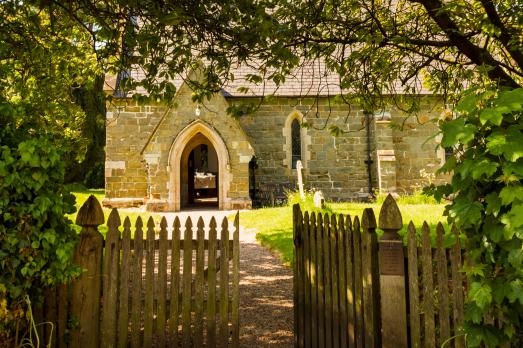
Churchyard path
Early Christian missionaries preached to the villagers at the side of the preaching cross. Inevitably, some of their congregation died and were buried at the side of the preaching cross before the first village church was built. Therefore, many churchyards are older than the church that now serves the community.
Until the opening of the first public cemeteries in the 19th century, churchyards were the only place people could be buried. Over the centuries countless thousands of burials took place, and repeated burials raised substantially the level of earth above that of the churchyard paths.

Coffin
The word probably derives from the Saxon 'cofa' meaning cave.
The wooden coffin is of comparatively recent origin. Numerous stone coffins exist which appear to be 11th and 12th century. They are a single block of stone, hollowed out to receive a body. Stone coffins were never buried deeply. They were sealed by a stone lid, usually with a cross and a symbol denoting the persons rank or profession. These included a broadsword for a knight, or a chalice and bible for a priest.
Poorer members of the community were not buried in coffins. Their bodies were wrapped in a cloth shroud. Later, they may have been placed in the 'parish coffin' and then taken out and placed in a communal grave.

Preaching and churchyard cross
In the 6th and 7th centuries, wooden crosses marked the spots where priests or monks preached to the local community. The wooden cross was replaced by a more permanent stone cross, around which services were held. Later still a wooden church might well have been erected.
Large crosses are found in many churchyards, and were intended to sanctify the churchyard and provide a communal memorial to all the dead of the parish. At the top of the shaft was either a cross or a tabernacle. Many survive only as a base and part of the shaft, because the cross was often destroyed by iconoclasts.

Tower or spire
Many parish churches have a tower at the west end of the nave. Some are topped by spires.
The tower may have been part of the original building, or added or enlarged at a later date. Some churches have a tower between the chancel and nave, with a transept at either side. In this case, the space inside the church at the intersection of nave, chancel and transepts is called the crossing.
The tower often contains the church bells. Church bells are pulled up from ground level, usually with the assistance of a form of treadmill.
Today the tower also often contains the clock workings.
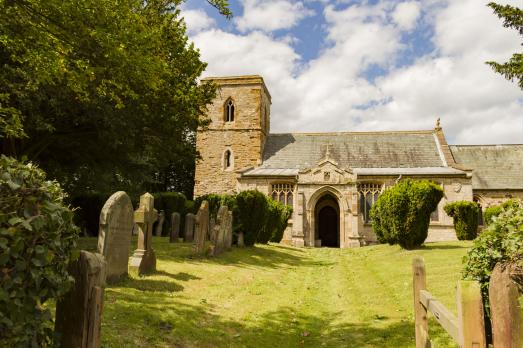
Porch
Ancient churches usually stand to the north of the original village, and the south door is the main entrance. From the 12th century many had a porch.
Some had porch altars, where marriage contracts and legal agreements were signed. In some places the coroners court and the first school met here.
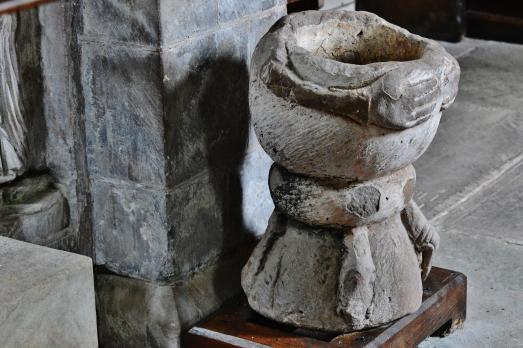
Holy water stoup
A stoup is a receptacle for holding holy water.
It is usually in the form of a small stone basin, in the porch near to the church door. People about to enter the church would dip their index finger in the water and make the sign of the cross upon themselves.
This practice was stopped following the Reformation and many of the stoups were removed.
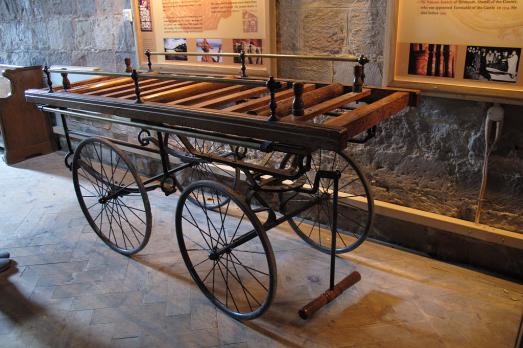
Bier
Many parishes had a bier for transporting a corpse for the journey from the village to the graveside.
It was usually a wooden frame with rollers and four handles. Later examples were fitted with springs and wheels, sometimes with rubber tyres. Small buildings of wood or brick, usually in a corner of the churchyard near the entrance, were used to house the parish bier.
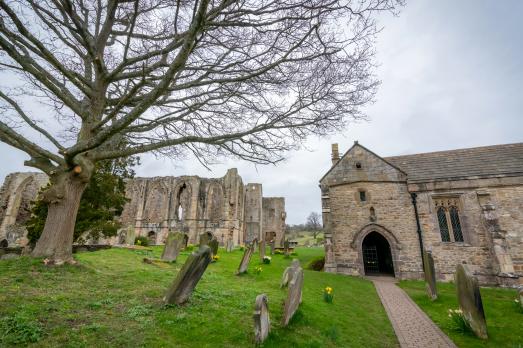
Niche
Most ancient churches have a niche, usually on or near the porch, where a statue of the church’s patron saint was displayed. Today, often they are empty.

Dripstone
A dripstone is a projecting stone moulding over doorways, windows and archways. It was designed to throw off rainwater and prevent it from running down tracery and glass.
It was also used for ornament and sometimes heads, grotesques or other ornamentations are carved at either end of the dripstone.

Gargoyle
The word gargoyle derives from the Old French 'gargouille', meaning throat.
A gargoyle is a projecting waterspout, usually incorporating a lead pipe. They were often carved in the shape of grotesque faces, beasts or figures. Gargoyles appear to have been first introduced around 1200.
Celtic warriors were known to chop off the heads of defeated enemies and display them in public. This may account for the popularity of gargoyles.
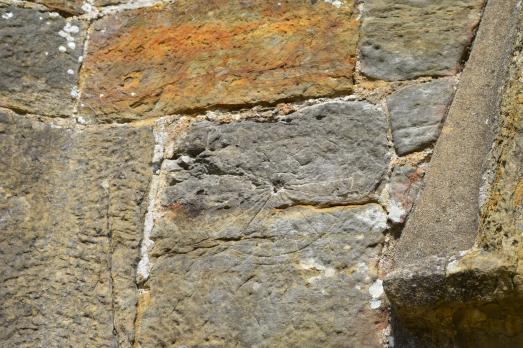
Scratch dial
Also known as Mass Dials, these were a very early and primitive form of sun dial. They were used by priests to advertise the time of the next service.
Usually in the form of a semi circle about ten inches across, they were scratched into the south wall of the church. A hole was bored at the centre and a number of lines scratched from the hole to the arc. The priest would place a short stick in the hole and when the sun shone the shadow of the stick on to one of the lines, the next service would start.
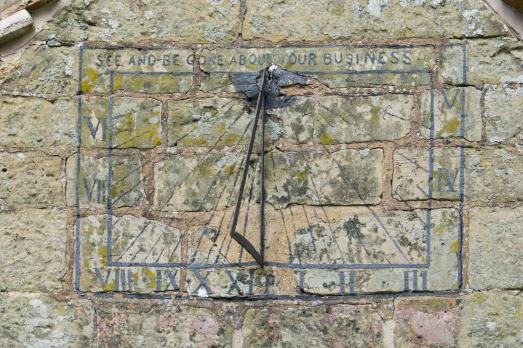
Sundial
Most medieval churches have a sundial.
It is usually situated above the porch or on the south face of the tower. Its main purpose was to ensure that the bell was rung at the correct time to mark daytime canonical hours. In many places, the sundial was the only reliable public timepiece until the early 19th century.
Eventually sundials developed into church clocks.
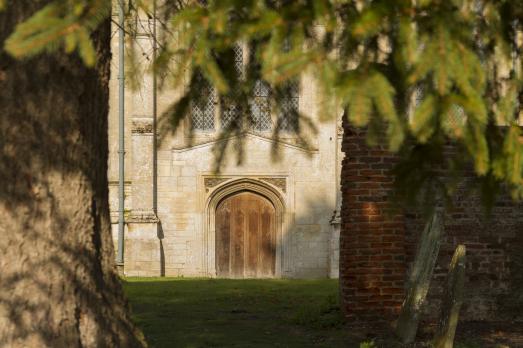
Devil's door
The Devil's door was in the north wall of the church.
This door was traditionally left open during a baptism to let out any evil spirits in the child. Following the reformation, many devils doors were removed or blocked up.
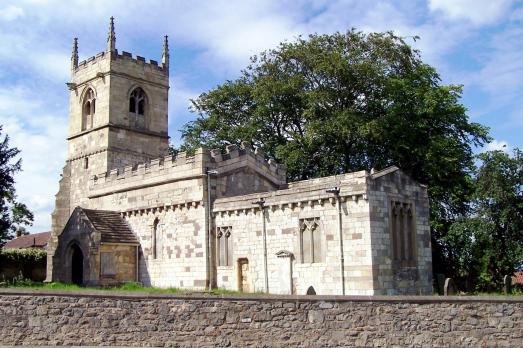
Corbel stones
Corbel stones are projections of stone, brick or wood designed to support an arch or beam.
A corbel table is a series of corbels immediately below the roof eaves, and can be found both externally and internally. The Normans were especially fond of corbel tables, which were often elaborately carved in the form of monsters and other grotesque creatures.

Stocks
The church is at the centre of village life, and in days gone by this included local law and order!
Stocks and whipping posts were often placed in or adjacent to church yards, for the punishment of minor offenders, including vagrants, drunkards and scolds. Some stocks were even stored inside the village church, usually beneath the tower.
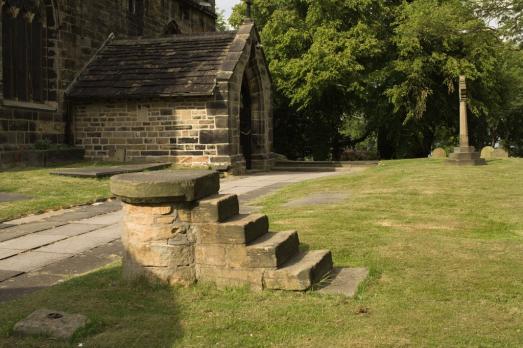
Mounting block
A mounting block gives assistance when mounting and dismounting horses. They are frequently located outside churches for the use of parishioners attending services.
They may have iron rings nearby for the horse’s reins to be tethered to whilst its owner was in church.
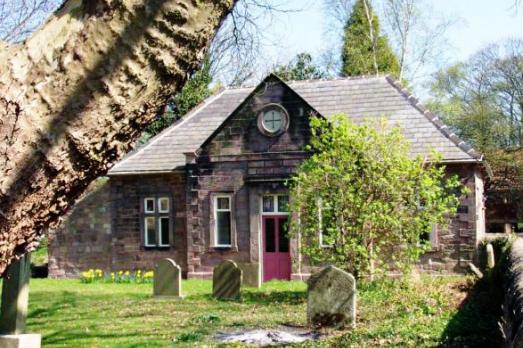
Church school
By the 17th century, many churches had schools, using the porch, rooms above the porch, or in the tower.
In some villages, parish or charity school rooms were built in the churchyard. In these, some fortunate local boys learned the basics of reading, writing and arithmetic. However, the schools depended on the availability of an enthusiastic curate or qualified layman, and many of the schools were short lived.
